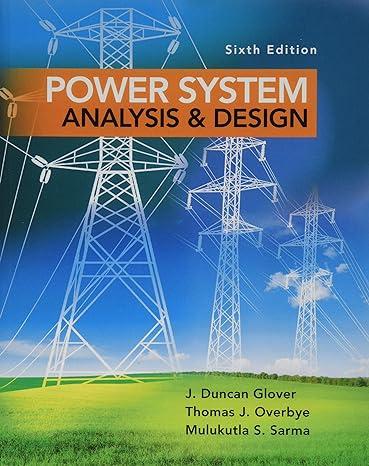For Problem 7.6, determine (a) the instantaneous symmetrical fault current in kA in phase (a) of the
Question:
For Problem 7.6, determine
(a) the instantaneous symmetrical fault current in kA in phase \(a\) of the generator as a function of time, assuming maximum dc offset occurs in this generator phase, and
(b) the maximum \(\mathrm{dc}\) offset current in \(\mathrm{kA}\) as a function of time that can occur in any one generator phase.
Problem 7.6
A 1000-MVA, \(20-\mathrm{kV}, 60-\mathrm{Hz}\), three-phase generator is connected through a \(1000-\mathrm{MVA}, 20-\mathrm{kV}, \Delta / 345-\mathrm{kV}\), Y transformer to a \(345-\mathrm{kV}\) circuit breaker and a \(345-\mathrm{kV}\) transmission line. The generator reactances are \(\mathrm{X}_{d}^{\prime \prime}=0.17, \mathrm{X}_{d}^{\prime}=0.30\), and \(\mathrm{X}_{d}=1.5\) per unit, and its time constants are \(\mathrm{T}_{d}^{\prime \prime}=0.05, \mathrm{~T}_{d}^{\prime}=1.0\), and \(\mathrm{T}_{\mathrm{A}}=0.10 \mathrm{~s}\). The transformer series reactance is 0.10 per unit; transformer losses and exciting current are neglected. A three-phase short-circuit occurs on the line side of the circuit breaker when the generator is operated at rated terminal voltage and at no-load. The breaker interrupts the fault three cycles after fault inception.
Step by Step Answer:

Power System Analysis And Design
ISBN: 9781305632134
6th Edition
Authors: J. Duncan Glover, Thomas Overbye, Mulukutla S. Sarma





